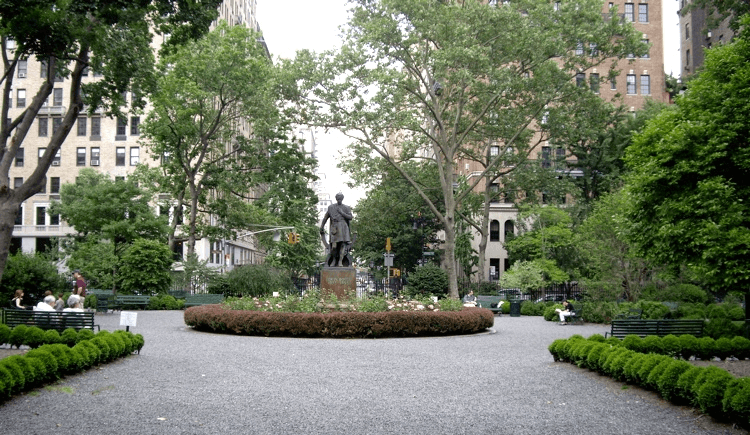We will be running several installments of the 5 Most Intriguing Facts About New York City for our Top Tuesday’s. We thought it would be interesting to see just how many facts are out there about different New York City neighborhoods that perhaps the average New Yorker or soon-to-be New Yorker might not even know about. If you already knew them comment below!
1. In 1831, New York was at the pinnacle of its expansion. The city’s population hit 60,000 in 1800 and had more than tripled by the early 1830’s, with a population of about 200,000. New York was a growing metropolis that rivaled many European cities in commerce, banking, and flourishing enterprises. Educational institutions such as the University of the City of New York (now known as New York University) were founded at this crucial time in the city’s history. On April 21, 1831, New York University was established its home at Washington Square in Greenwich Village.
2. Gramercy Park is the oldest private park in the United States and it continues to thrive amongst its residents in the heart of Manhattan. The land that the park now occupies was once owned by Samuel B. Ruggles, a local lawyer and politician. In 1831, Ruggles donated the land to the city but insisted that it not be used for commercial purposes. To this day, Gramercy Park remains private property and does not contain any swing sets, concession stands, or other establishments that may infringe upon its rustic charm.
3. In 1835, a Scotsman named James Gordon Bennett launched New York’s first newspaper, the New York Herald. The famous Herald Square in Midtown Manhattan was named after the newspaper and by 1845, it was the most successful newsprint in the United States. The paper ran until 1924 and reported many significant stories over the years, including coverage of World War I and the sinking of the Titanic.
4. The Great Famine of 1845 hit Ireland very harshly and destroyed the potato crop, a food staple that was vital to the Irish population. The scarcity of potatoes in Ireland lasted from 1845 to 1852. During this dark period in Irish history, millions of starving citizens fled Ireland and sought refuge in New York. Today, nearly 1 million New York City residents can trace their family lineage to Ireland. The Irish Hunger Memorial, commemorating those who perished during the Great Famine, is located in Battery Park City.
5. In the mid-19th century, New York’s population was growing and thriving rapidly. The city embodied a chaotic atmosphere, peppered with factories, horse and carriages, and hardworking citizens. New York lacked open spaces for people to gather and escape the pandemonium of urban life. In 1853, the New York legislature provided a plot of open land from 59th to 106th streets – this area would soon become known as Central Park.
Edited by Madeehah Shaheed






